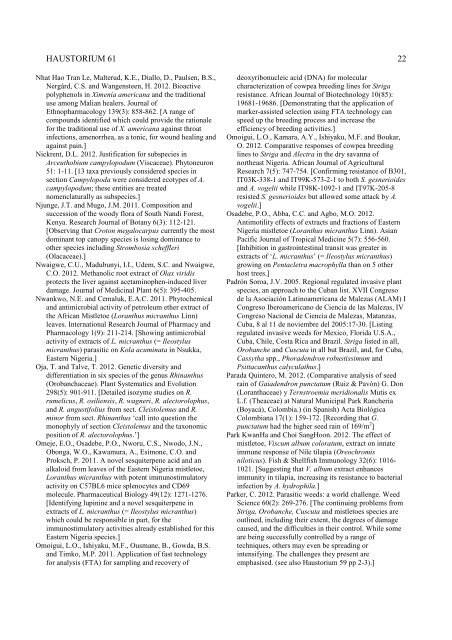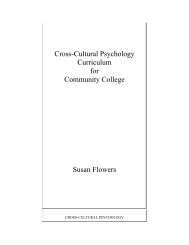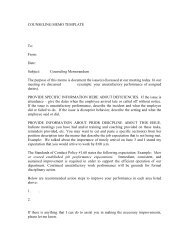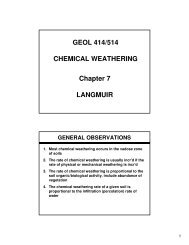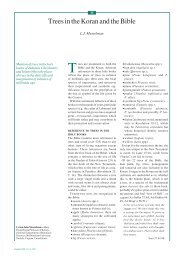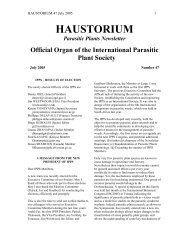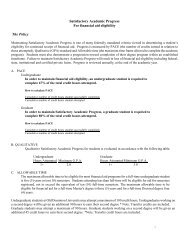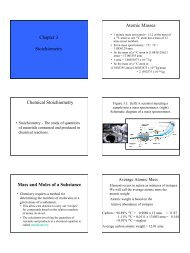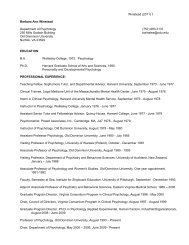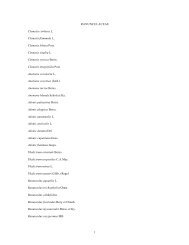HAUSTORIUM
HAUSTORIUM
HAUSTORIUM
Create successful ePaper yourself
Turn your PDF publications into a flip-book with our unique Google optimized e-Paper software.
<strong>HAUSTORIUM</strong> 61 22<br />
Nhat Hao Tran Le, Malterud, K.E., Diallo, D., Paulsen, B.S.,<br />
Nergård, C.S. and Wangensteen, H. 2012. Bioactive<br />
polyphenols in Ximenia americana and the traditional<br />
use among Malian healers. Journal of<br />
Ethnopharmacology 139(3): 858-862. [A range of<br />
compounds identified which could provide the rationale<br />
for the traditional use of X. americana against throat<br />
infections, amenorrhea, as a tonic, for wound healing and<br />
against pain.]<br />
Nickrent, D.L. 2012. Justification for subspecies in<br />
Arceuthobium campylopodum (Viscaceae). Phytoneuron<br />
51: 1-11. [13 taxa previously considered species in<br />
section Campylopoda were considered ecotypes of A.<br />
campylopodum; these entities are treated<br />
nomenclaturally as subspecies.]<br />
Njunge, J.T. and Mugo, J.M. 2011. Composition and<br />
succession of the woody flora of South Nandi Forest,<br />
Kenya. Research Journal of Botany 6(3): 112-121.<br />
[Observing that Croton megalocarpus currently the most<br />
dominant top canopy species is losing dominance to<br />
other species including Strombosia scheffleri<br />
(Olacaceae).]<br />
Nwaigwe, C.U., Madubunyi, I.I., Udem, S.C. and Nwaigwe,<br />
C.O. 2012. Methanolic root extract of Olax viridis<br />
protects the liver against acetaminophen-induced liver<br />
damage. Journal of Medicinal Plant 6(5): 395-405.<br />
Nwankwo, N.E. and Cemaluk, E.A.C. 2011. Phytochemical<br />
and antimicrobial activity of petroleum ether extract of<br />
the African Mistletoe (Loranthus micranthus Linn)<br />
leaves. International Research Journal of Pharmacy and<br />
Pharmacology 1(9): 211-214. [Showing antimicrobial<br />
activity of extracts of L. micranthus (= Ileostylus<br />
micranthus) parasitic on Kola acuminata in Nsukka,<br />
Eastern Nigeria.]<br />
Oja, T. and Talve, T. 2012. Genetic diversity and<br />
differentiation in six species of the genus Rhinanthus<br />
(Orobanchaceae). Plant Systematics and Evolution<br />
298(5): 901-911. [Detailed isozyme studies on R.<br />
rumelicus, R. osiliensis, R. wagneri, R. alectorolophus,<br />
and R. angustifolius from sect. Cleistolemus and R.<br />
minor from sect. Rhinanthus ‘call into question the<br />
monophyly of section Cleistolemus and the taxonomic<br />
position of R. alectorolophus.’]<br />
Omeje, E.O., Osadebe, P.O., Nworu, C.S., Nwodo, J.N.,<br />
Obonga, W.O., Kawamura, A., Esimone, C.O. and<br />
Proksch, P. 2011. A novel sesquiterpene acid and an<br />
alkaloid from leaves of the Eastern Nigeria mistletoe,<br />
Loranthus micranthus with potent immunostimulatory<br />
activity on C57BL6 mice splenocytes and CD69<br />
molecule. Pharmaceutical Biology 49(12): 1271-1276.<br />
[Identifying lupinine and a novel sesquiterpene in<br />
extracts of L. micranthus (= Ileostylus micranthus)<br />
which could be responsible in part, for the<br />
immunostimulatory activities already established for this<br />
Eastern Nigeria species.]<br />
Omoigui, L.O., Ishiyaku, M.F., Ousmane, B., Gowda, B.S.<br />
and Timko, M.P. 2011. Application of fast technology<br />
for analysis (FTA) for sampling and recovery of<br />
deoxyribonucleic acid (DNA) for molecular<br />
characterization of cowpea breeding lines for Striga<br />
resistance. African Journal of Biotechnology 10(85):<br />
19681-19686. [Demonstrating that the application of<br />
marker-assisted selection using FTA technology can<br />
speed up the breeding process and increase the<br />
efficiency of breeding activities.]<br />
Omoigui, L.O., Kamara, A.Y., Ishiyaku, M.F. and Boukar,<br />
O. 2012. Comparative responses of cowpea breeding<br />
lines to Striga and Alectra in the dry savanna of<br />
northeast Nigeria. African Journal of Agricultural<br />
Research 7(5): 747-754. [Confirming resistance of B301,<br />
IT03K-338-1 and IT99K-573-2-1 to both S. gesnerioides<br />
and A. vogelii while IT98K-1092-1 and IT97K-205-8<br />
resisted S. gesnerioides but allowed some attack by A.<br />
vogelii.]<br />
Osadebe, P.O., Abba, C.C. and Agbo, M.O. 2012.<br />
Antimotility effects of extracts and fractions of Eastern<br />
Nigeria mistletoe (Loranthus micranthus Linn). Asian<br />
Pacific Journal of Tropical Medicine 5(7): 556-560.<br />
[Inhibition in gastrointestinal transit was greater in<br />
extracts of ‘L. micranthus’ (= Ileostylus micranthus)<br />
growing on Pentacletra macrophylla than on 5 other<br />
host trees.]<br />
Padrón Soroa, J.V. 2005. Regional regulated invasive plant<br />
species, an approach to the Cuban list. XVII Congreso<br />
de la Asociación Latinoamericana de Malezas (ALAM) I<br />
Congreso Iberoamericano de Ciencia de las Malezas, IV<br />
Congreso Nacional de Ciencia de Malezas, Matanzas,<br />
Cuba, 8 al 11 de noviembre del 2005:17-30. [Listing<br />
regulated invasive weeds for Mexico, Florida U.S.A.,<br />
Cuba, Chile, Costa Rica and Brazil. Striga listed in all,<br />
Orobanche and Cuscuta in all but Brazil, and, for Cuba,<br />
Cassytha spp., Phoradendron robustissimum and<br />
Psittacanthus calyculathus.]<br />
Parada Quintero, M. 2012. (Comparative analysis of seed<br />
rain of Gaiadendron punctatum (Ruiz & Pavón) G. Don<br />
(Loranthaceae) y Ternstroemia meridionalis Mutis ex<br />
L.f. (Theaceae) at Natural Municipal Park Rancheria<br />
(Boyacá), Colombia.) (in Spanish) Acta Biológica<br />
Colombiana 17(1): 159-172. [Recording that G.<br />
punctatum had the higher seed rain of 169/m 2 ]<br />
Park KwanHa and Choi SangHoon. 2012. The effect of<br />
mistletoe, Viscum album coloratum, extract on innate<br />
immune response of Nile tilapia (Oreochromis<br />
niloticus). Fish & Shellfish Immunology 32(6): 1016-<br />
1021. [Suggesting that V. album extract enhances<br />
immunity in tilapia, increasing its resistance to bacterial<br />
infection by A. hydrophila.]<br />
Parker, C. 2012. Parasitic weeds: a world challenge. Weed<br />
Science 60(2): 269-276. [The continuing problems from<br />
Striga, Orobanche, Cuscuta and mistletoes species are<br />
outlined, including their extent, the degrees of damage<br />
caused, and the difficulties in their control. While some<br />
are being successfully controlled by a range of<br />
techniques, others may even be spreading or<br />
intensifying. The challenges they present are<br />
emphasised. (see also Haustorium 59 pp 2-3).]


